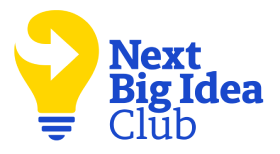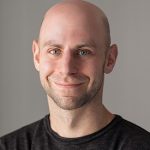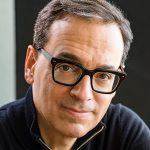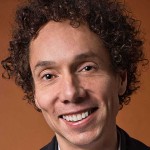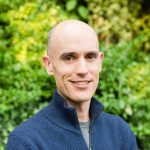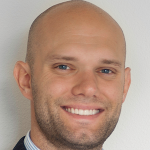Dr. Wendy Johnson is a family physician, public health professor, and activist. Her career includes stints scaling up HIV treatment in Mozambique, overseeing an urban public health department, and directing a community clinic in Santa Fe, New Mexico. She holds faculty appointments at the University of Washington and the University of New Mexico.
What’s the big idea?
Traditional Western healthcare barely scratches the surface when it comes to supporting wellbeing. Medicine maintains a hyperfocus on the individual, specifically their biological and genetic factors. But to be truly healthy, we need to consider environmental and social factors as well. We need unpolluted nature; we need connection and community—we need kinship as medicine to make healing and thriving both possible and abundant.
Below, Wendy shares five key insights from her new book, Kinship Medicine: Cultivating Interdependence to Heal the Earth and Ourselves. Listen to the audio version—read by Wendy herself—below, or in the Next Big Idea App.
1. The 80/20 secret of health and wellness.
Early in my career, I learned that the medical system deals with just a small fraction of what determines our health. We doctors focus almost entirely on individual biological and genetic factors, but that is only about 20 percent of what contributes to well-being.
The other 80 percent is determined by social conditions and environmental context: things like education, economic status, upbringing, exposure to pollutants, and a million other things we now call the social determinants of health. These are all largely ignored by modern medicine. Calling this a health care system when it only concerns itself with the tip of the iceberg is like calling yourself a soccer team when you’ve only got a goalie.
As a doctor, I got frustrated focusing on that narrow 20 percent in the exam room and then pushing patients out into the toxic environments that largely cause their illnesses, knowing they’ll come right back with the same chronic problems. So, I’ve spent my career trying to find ways for the health professionals and communities to push the needle on that other 80 percent: to create healthier social conditions and environments for all of us, for our collective well-being.
2. Wellbeing is a collective attribute.
Contrary to what predatory wellness grifters will tell you, health is much more of a communal attribute than an individual one. It’s very difficult to be healthy as an individual when you live in a community that is sick and suffering. Even your body is an ecosystem, in communication with many concentric and overlapping larger ecosystems around you.
You couldn’t survive as an individual organism without your microbiome fellow travelers. A healthy microbiome is essential for regulating and controlling inflammation throughout the body. Trillions of organisms make up this complex ecosystem that comprises our very being. Our microbiome is us. When things get out of balance, a condition called dysbiosis, we are at an increased risk of inflammatory diseases, from eczema to systemic chronic problems like rheumatoid arthritis.
“It’s very difficult to be healthy as an individual when you live in a community that is sick and suffering.”
These relationships have to function well for us to be healthy. Similarly, if you’re isolated or lack supportive relationships, you suffer. We’re communal beings. The Earth itself is in a state of dysbiosis right now. For us to really be healthy, we have to start addressing the health of the ecosystems and communities we inhabit.
3. Adopting a life-centric mindset is good for humans and the Earth.
Our hyper-individualistic, anthropocentric mindset is killing us and the Earth. If we are going to make the necessary shifts in our culture to address the problems of our collective well-being as a species, as well as the health of our environment, we must stop thinking of ourselves as the most important animal out there. We have to consider the effects of our actions on all other beings.
The philosopher Timothy Morton calls this ecological thinking—recognizing that we’re all interdependent on a mesh of life. When you are part of a family or community, you think about your actions and how they will affect other members of your family or community. When you extend that idea of kinship to our whole ecosystem, we start to think more about our sense of responsibility to other beings.
That also means we start asking different questions. Do I really need this product? Is this decision good for my community or environment, or is it just what consumer culture has taught me to want? We’ve been sold the idea of antiseptic, hyper-convenient living. We’ve been conditioned to think we have a lot of so-called “needs” that didn’t exist just a few years ago—that comes with enormous environmental and health costs.
4. Our communal muscle is atrophied—it needs exercise.
25 years ago, in the book Bowling Alone, political scientist Robert Putnam argued that Americans were increasingly disconnected from their communities, leading to a weakening of social bonds and a decline in civic participation. He predicted that this trend would have devastating consequences for our collective well-being and for democracy. I would say his predictions have come true.
Community cohesiveness in the United States was weakening well before 2020, and then the pandemic came around and dealt a devastating blow. The human brain changes the longer we remain socially isolated. We start getting paranoid and suspicious of social interaction; we fear each other more. We can see that play out in communities all over the country. In many places, when someone unexpectedly knocks at the door, it provokes feelings of fear and immediate thoughts of possible threat. We think, What does that person want?, as we nervously check our ring camera.
In contrast, in my rural village outside Santa Fe, I know all my neighbors well because we share resources and work on various projects together. We all work together to maintain centuries-old irrigation ditches. If I hear a knock on my door, it’s probably a neighbor needing help, so I open it with a feeling of curiosity and compassion.
“The human brain changes the longer we remain socially isolated.”
We are so isolated right now, and that isolation has fueled the disconnection and polarization in our political systems. Face-to-face connection—especially through shared projects—does the opposite. We need to rebuild the skills of being together, just like you’d recondition a weakened muscle. We need to retrain our brains.
The good news is that deepening social interaction changes our brain chemistry back to being more compassionate and trusting. When we connect in person, and especially in nature, something shifts. We fall in love with each other, and with the world. When you feel kinship—with people, with land—you fight for what you love. I believe our politics would look radically different if more of us were grounded in that kind of connection.
5. Embracing death can give you more appreciation and joy in life.
About 15 years ago, when I was working in Africa, I almost died in a plane crash. I was on a small turboprop flying from South Africa to Mozambique when suddenly I heard a loud bang and then silence. The plane lurched into a spiraling nosedive. I knew that the ground couldn’t be too far away, and we’d come crashing into it. I was 100 percent certain I was about to die. Then suddenly, we pulled out of it. The next day, the South African newspapers reported we were just 700 feet from the ground.
For days afterward, I felt the preciousness of life in each moment. My senses were heightened: food tasted better, a breeze on my skin felt like a crisp, tingling embrace. The effect lasted only a few weeks, but I still reflect on the moment and wish I could have bottled that feeling to imbibe later.
Our western culture pushes death to the margins, but we can look to other cultures that embrace death and see grieving as a communal practice. When I lived in Mozambique, my home was on the route from the church to the cemetery. Every Saturday and Sunday, a steady stream of flatbed trucks rumbled by, filled with mourners pressed closely together, swaying and embracing, and supporting one another. Death is not hidden away in Mozambique, a country with high rates of HIV and infant mortality. Almost everyone experiences the passing of a loved one while they are still in childhood. While space for grieving communally is built into the culture, the Mozambicans I encountered also know how to feel deep joy. Celebrations of birth or marriage can be many-day, raucous affairs. I came to understand that the Mozambican embrace of death is directly related to their deeply felt expressions of joy.
A slew of research shows that those who feel closer to death are much more likely to focus on meaningful relationships and on the present moment, and therefore more likely to be paradoxically happier and enjoy life more. Not all of us will have a near-death experience, but all of us can get acquainted with death and come to terms with its inevitability. It might even let us appreciate life more.
Enjoy our full library of Book Bites—read by the authors!—in the Next Big Idea App:
